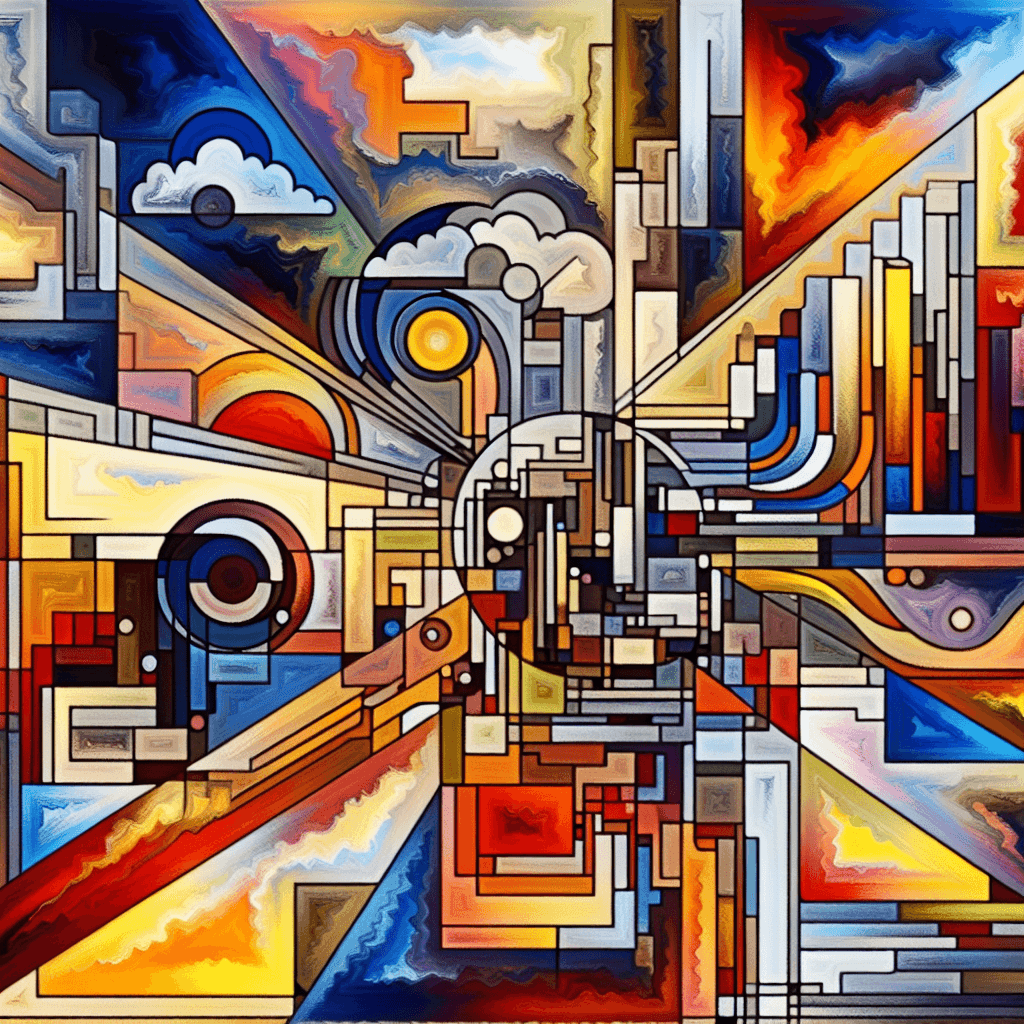Art Movements and Modern Painting: An Insight
TL;DRModern painting is a rich tapestry woven with various art movements, each with its unique characteristics and philosophies. From the light-dappled canvases of Impressionism to the bold colors of Fauvism, the geometric shapes of Cubism to the emotional intensity of Expressionism, and the dreamlike quality of Surrealism to the cultural critique of Pop Art, modern art movements have shaped the way we see and interpret art today. This article delves into the most influential art movements that have defined modern painting, offering a comprehensive overview for art enthusiasts and general audiences alike.

Table of Contents
The Emergence of Modern Art
Modern art emerged as a response to the rapid changes in society during the late 19th and early 20th centuries. Industrialization, urbanization, and the aftermath of the World Wars all played a role in shaping the new artistic direction. Artists began to move away from the strictures of academic painting and the representation of reality as it is. Instead, they sought to express their individual perspectives and the subjective nature of human experience.
Impressionism
Origins and Characteristics
Impressionism, which originated in France in the 1860s, is often considered the first distinct modern art movement. Impressionists broke away from traditional techniques, focusing on the play of light and color, and the fleeting nature of the moment. They painted en plein air (outdoors) to capture the transient effects of sunlight on the landscape.
Key Artists and Works
Claude Monet's "Impression, Sunrise" (1872) gave the movement its name, while Edgar Degas, Pierre-Auguste Renoir, and Camille Pissarro were also central figures. Their works, such as Renoir's "Dance at Le Moulin de la Galette" (1876), are celebrated for their vibrant brushwork and luminous palette.
Post-Impressionism
Evolution from Impressionism
Post-Impressionism followed Impressionism and served as a bridge to further abstract movements. Post-Impressionists maintained the vivid colors and real-life subject matter but sought to imbue their works with more form and structure, as well as deeper emotional resonance.
Prominent Post-Impressionists
Vincent van Gogh, Paul Cézanne, and Paul Gauguin were key figures. Van Gogh's "Starry Night" (1889) and Cézanne's "Mont Sainte-Victoire" series exemplify the movement's emphasis on personal expression.
Fauvism
Defining Features
Fauvism was characterized by its use of wild brush strokes and strident colors. The name 'Fauves' (wild beasts) was given by a critic due to the shockingly bold color choices used by the artists.
Fauvism's Impact
Henri Matisse and André Derain led the movement. Matisse's "The Joy of Life" (1905-1906) is a prime example of Fauvism's impact on modern painting, with its radical use of color to convey emotional states.
Cubism
The Concept of Cubism
Cubism, pioneered by Pablo Picasso and Georges Braque, involved the fragmentation and reassembly of objects into abstracted forms, often depicting multiple viewpoints simultaneously.
Cubism's Influence
Picasso's "Les Demoiselles d'Avignon" (1907) and Braque's "The Portuguese" (1911) are seminal works that challenged traditional perspectives and paved the way for further abstraction in art.
Futurism
Futurism's Ideology
Futurism, an Italian movement, celebrated technology, speed, and youth. It embraced the dynamism of the modern world and aimed to capture movement in an entirely new way.
Futurist Works
Umberto Boccioni's "Unique Forms of Continuity in Space" (1913) and Giacomo Balla's "Dynamism of a Dog on a Leash" (1912) exemplify the movement's fascination with motion and the modern experience.
Expressionism
Expressionism's Emphasis
Expressionism was a movement that prioritized the expression of emotional experience over physical reality. It often featured bold colors and distorted forms to evoke moods or ideas.
Key Expressionist Artists
Edvard Munch and Egon Schiele were notable artists within this movement. Munch's "The Scream" (1893) is an iconic work that perfectly captures the angst and alienation of the modern age.
Dadaism
Dadaism's Rebellion
Dadaism emerged during World War I as a direct response to the horrors of war. Dada artists used absurdity and irrationality to critique the societal values that led to the conflict.
Dada's Legacy
Marcel Duchamp's "Fountain" (1917), a urinal signed "R. Mutt," is one of the most famous Dada works, questioning the very nature of art and the role of the artist.
Surrealism
Surrealism's Dreamlike World
Surrealism sought to tap into the unconscious mind to access a deeper reality beyond the rational world. It drew heavily on the theories of Sigmund Freud and the idea of the subconscious.
Surrealist Masterpieces
Salvador Dalí's "The Persistence of Memory" (1931) and René Magritte's "The Treachery of Images" (1929) are key works that showcase the dreamlike and often unsettling imagery of Surrealism.
Abstract Expressionism
Abstract Expressionism's Approach
Abstract Expressionism was an American post-World War II art movement that emphasized spontaneous, automatic, or subconscious creation. It was about conveying emotion and ideas through non-representational forms.
Abstract Expressionist Icons
Jackson Pollock and Mark Rothko were central figures. Pollock's drip paintings, like "Number 1A, 1948" (1948), and Rothko's color field paintings, such as "Orange, Red, Yellow" (1961), are emblematic of the movement's approach to abstraction and emotional depth.
Pop Art
Pop Art's Reflection of Society
Pop Art emerged in the 1950s and 60s and was characterized by its embrace of popular culture and mass media, often using irony to critique consumerism and traditional art values.
Pop Art Figures
Andy Warhol and Roy Lichtenstein were leading artists in this movement. Warhol's "Marilyn Diptych" (1962) and Lichtenstein's "Whaam!" (1963) are quintessential Pop Art works that draw from advertising and comic book styles.
Conclusion
Modern painting is a fascinating journey through a series of bold experiments and groundbreaking ideas. Each movement, with its distinct style and philosophy, contributed to the rich tapestry of modern art. These movements challenged the status quo, pushed the boundaries of artistic expression, and provided new lenses through which we can view the world. As we continue to explore and appreciate these artistic innovations, we gain a deeper understanding of the creative spirit that drives humanity forward.
The art movements discussed in this article are just the tip of the iceberg when it comes to the diverse world of modern painting. They serve as a testament to the enduring power of art to reflect and shape human experience. Whether you are an art aficionado or a curious newcomer, the exploration of these movements offers endless opportunities for discovery and inspiration.



